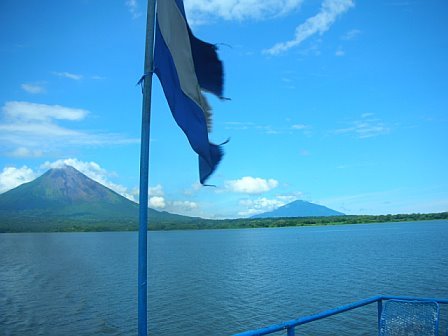
7
MarSunbathing in Haiti, Surfing in Nicaragua
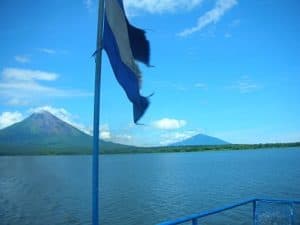 It was the summer of 2010 – one of my all-time favorite travel memories. A small rowboat carried me and my friend to a pristine beach cove, as beautiful as any postcard from a tropical paradise anywhere in the world. We had the entire palm-lined shore to ourselves, to sunbathe, look for shells, and swim in calm tepid water. At some point a man with a sack of fresh mangoes rowed up to the cove and sold some to us for about ten cents each, then rowed along to his next stop. The day couldn’t have been more perfect after an exhausting week of hard work and heartbreak. I should mention, we were in Haiti, six months after the devastating earthquake of 2010.
It was the summer of 2010 – one of my all-time favorite travel memories. A small rowboat carried me and my friend to a pristine beach cove, as beautiful as any postcard from a tropical paradise anywhere in the world. We had the entire palm-lined shore to ourselves, to sunbathe, look for shells, and swim in calm tepid water. At some point a man with a sack of fresh mangoes rowed up to the cove and sold some to us for about ten cents each, then rowed along to his next stop. The day couldn’t have been more perfect after an exhausting week of hard work and heartbreak. I should mention, we were in Haiti, six months after the devastating earthquake of 2010.
The earthquake measured 7 on the Richter scale and devastated a country already described as the poorest in our hemisphere. News cycles broadcast collapsed buildings, rescue efforts, then the raising of tent camps and influx of donations. Reporters spouted numbers on who promised how much aid money, which countries responded most honorably, and which NGOs warranted donations.
I wanted to see Haiti with my own eyes once travel re-opened for regular folks like me, as opposed to journalists and medical teams. Amy Bracken, a long-time reporter and radio producer specializing in Haiti, connected us with locals and provided tips for our potentially ill-conceived venture. The destruction proved worse and farther-reaching than I’d ever imagined, but I documented it with photos, and learned about Haiti from Haitians themselves. We ended up helping a group of locals clear the rubble of their collapsed three-story church by hand. The trip moved and changed me; the beach retreat was a bonus. The best (albeit minor) thing we did to “help” Haiti was to visit, learn, and put some tourist dollars into the local economy.
Flashback to spring of 2006 – another favorite travel memory. We lounged on hammocks surrounded by flowers all colors of the rainbow, watching exotic butterflies flutter by. It seemed as though each took its turn hovering over us, like a supermodel on a runway, then darted away making room for the next in line. My friend and I walked to the beach on a calm lake, and again, had the place to ourselves, aside from three horses who meandered down to sip some fresh lake water, then sleep on the sand. This happened on Ometepe Island, Nicaragua.
After that trip I returned to Nicaragua year after year, and started contemplating retiring there some day. I led groups of students to work on humanitarian projects such as building water filters, and helping out on a bookmobile. In-between work assignments we made excursions to some of the best surfing beaches in the Americas and zip-lining courses among howler monkeys, distributing our fair share of currency among the local businesses. I made connections with U.S.-based non-profits: the Newton/San Juan del Sur Sister City Project (on whose board I served for a decade), and the Hester Hodgdon Libraries for All Foundation, which partnered with my library-school alma mater, Simmons College. The true heroes I grew to know and admire were local leaders – the Nicaraguan organizers and activists who ran programs bettering their own communities, who called the shots and whose direction we followed.
During those years I fielded many calls by concerned parents of students, reluctant to allow their children to travel to a “war-torn” “third world” country. Understandably, they associated Nicaragua with the Iran-Contra scandal, the war between the Sandinistas and Reagan-backed Contras, Ollie North, and the Cold War threat of a Latin American revolution too close to home. Truth be told, we met dozens of locals who lived through those dark days and shared stories from their own memories, unfiltered by the news media, and students learned more than they could have from textbooks. When my own family expressed concerns over my choice of a second home, I assured them I felt safer on the Nicaraguan coast than at home in Boston, where I lived at the time amid the dangers of gang violence, break-ins and muggings.
Haiti and Nicaragua memories keep coming back to me lately as I anticipate two upcoming programs at the library. Haiti: Then and Now will feature journalist Amy Bracken, to discuss the country before the earthquake, in its immediate aftermath, and the state of things today. Nicaragua: Then and Now will include Dr. David Gullette, President of the Newton/San Juan del Sur Sister City Project, who has gone to Nicaragua every year since 1988, and offers expertise on the country’s history from the Sandinista revolution through the present day, including over 300 recent deaths of protesters. I plan to join both presenters to chime in as a tourist to these unlikely locales, and to advocate for the transformative experience of setting fear and assumptions aside to travel “off the beaten path.”
To learn more about Haiti and Nicaragua, please attend the following programs, or enjoy these recommendations:
Haiti: Then and Now, Morrill Memorial Library, March 11, 2019, 6:30-7:30 pm
Nicaragua: Then and Now, Morrill Memorial Library, April 22, 2019, 6:30-7:30 pm
The Country Under My Skin: A Memoir of Love and War, by Giaconda Belli
Collapse: How Societies Choose to Fail or Succeed, (Chapter 11), by Jared Diamond
John Pilger’s film, Nicaragua: A Nation’s Right to Survive
The Big Truck That Went By: How the World Came to Save Haiti and Left Behind a Disaster, by Jonathan Katz
Lydia Sampson is the Technical Services Department Head at the Morrill Memorial Library in Norwood, MA. Look for her article in the March 7, 2019 issue of the Norwood Transcript.
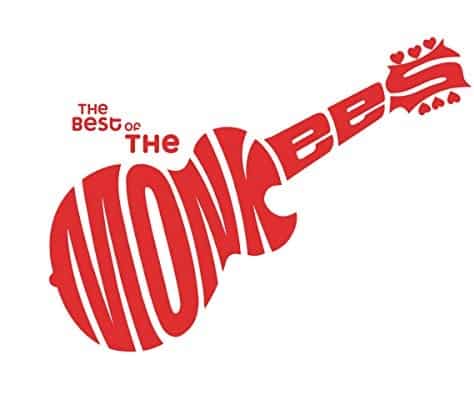
28
FebRevisiting the Monkees and Remembering Peter Tork
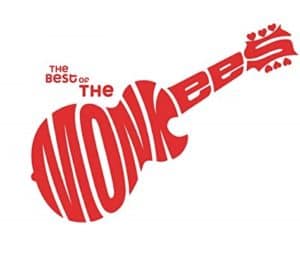
Just days after learning that the Monkees were on a national tour this past week, I heard the news about Peter Tork’s death. I questioned how a national Monkees tour could occur without Davy Jones, who passed away nearly seven years ago. Apparently, it wasn’t happening without Peter Tork, either, who had been ill and fighting cancer for the past ten years, but most specifically since 2018.
Tork was diagnosed with a slow-growing cancer of the head and neck in 2009. After surgery and during radiation treatment, Peter continued to play music on tour. For nearly a decade, he documented his struggle with adenoid cystic carcinoma on his Facebook page. In an interview with the Washington Post: Voices, “Peter Tork’s Cancer, In His Own Words,” published in July 2009, Tork described the scary words of his diagnosis, the harsh radiation treatment, and his commitment to continuing to perform.
After Monkee Davy Jones passed in 2012, I wrote “Hey, Hey, Find the Monkees… at the Library” for the March 23rd From the Library Column. In that column, I confessed that Peter Tork was actually my favorite.
When a library patron emailed me to remind me of my teenage fandom for the Monkees, and that he was sorry Peter Tork had died, I was prompted to reread the column. Fandom, of course, was not a common expression or word in the time of Monkees. Mania was. Specifically Beatlemania and Monkeemania. I was pretty maniacal about the Monkees television show, never missing a night of the season.
In the 2012 column, I admitted that I remembered “racing home from school clubs and babysitting gigs to catch the very start of the show each week.” Further, I confessed that we girls “were all a bit nuts about the Monkees. They were quirky, silly but cute. We all had our favorites (mine was Peter Tork). Davy was just too cute, Mickey Dolenz a bit odd, and Michael Nesmith way too moody.”
Peter Tork was chosen as one of the Monkees for his “open, Nordic look.” Dave Zimmer, in his biography of Crosby, Stills and Nash, wrote that twenty-one-year-old Steven Stills flunked his audition for the Monkees. He then recommended his blonde and lanky doppelganger, Peter Tork. Peter was already in his mid-twenties, older than the other three band leaders. (Davy Jones was a mere 19 when he signed on).
What I find most interesting is that musicians Jones, Nesmith, Dolenz, and Tork never played their own music on the two-season television series. Davy Jones was an accomplished actor and singer, playing the Artful Dodger in Oliver as a teenager. Dolenz took drum lessons so he could act like he was playing the drums, but he was a guitarist, along with Nesmith and Tork. Nesmith played country and rock, publishing his own songs. Dolenz had acted since he was a child, and played guitar in cover bands. In addition to the guitar, Peter played piano and banjo. Tork was a Greenwich, CT native, and spent years as a folk musician in Greenwich Village after a stint at Carleton College in Minnesota.
Even though Peter Tork was cast as the dumb-blonde, often playing the dummy on the Monkees television show set, as a 14-year old teen girl I was definitely attracted to his refined and cultivated side. In the early 1970s, just after I had graduated from high school, Peter moved to Northern California where he joined a local choir. Later, he spent three years as a high school educator, teaching music, social studies, math, French and history in Santa Monica. And coaching baseball on the side.
In 1967, after the television show had aired both seasons, the Monkees were finally given their due. They released Headquarters, an album on which they played the instruments in addition to singing. Peter Tork co-wrote several of the songs and received acclaim for them.
Peter Tork created the Shoe Suede Blues in 1994, playing as a band for a benefit. They were an instant hit and were asked to perform at other events, including at the Monkees 30th Anniversary Convention in 1997 (which was televised). Peter and the Shoe Suede Blues, in fact, continued to play their blues across the country in small venues, releasing albums from 1999 to 2018. Saved by the Blues and Cambria Hotel were a few of the best. Relax Your Mind is their most recent.
Peter’s given name was Thorkelson. His father was a college professor in Connecticut, and he had two brothers and a sister who, of course, did not use the name Tork. Peter went on to marry four times, the last surviving his death this past week. He had two daughters and one son.
Tork was a realist about fame. He felt that “happiness came simply from doing the work. In a Los Angeles Times article written in 1992, twenty-five years after the Monkees television show ended, he confessed that he wanted to play music full time. “A little bit of fame is fun, but I’ve had enough, thank you.”
Nostalgia about the Monkees is apparently here to stay, and we’ve collected many Monkees recordings at our library. The DVDs of the two seasons of the Monkees television show (1966-1967 and 1967-1968) feature 32 and 26 episodes, respectively, along with the movie Head, which hit the screens in 1968, just three years after the Beatles’ Help! The story of the Monkees and their manufactured music and band can also be watched online on the Smithsonian Channel. The 46-minute documentary is fascinating and includes footage of all the Monkees, including reclusive and moody Michael Nesmith. If you would like to reserve any of these titles in DVD or CD version, please call the Reference or Information desks of the library, 781-799-0200, or reserve them in the Minuteman library catalog.
On “The Real Peter Tork (official)” Facebook page, Peter’s family wrote that “Peter’s energy, intelligence, silliness, and curiosity were traits that for decades brought laughter and enjoyment to millions, including those of us closest to him. Those traits also equipped him well to take on cancer, a condition he met with unwavering humor and courage. We are asking fans who would like to make contributions in Peter’s name to donate to the scholarship fund at The Institute for The Musical Arts in Massachusetts, a nonprofit that provides young women with music education, music recording, and music community.
Charlotte Canelli is the Director of the Morrill Memorial Library in Norwood, MA. Look for her column in the February 28, 2019 issue of the Norwood Transcript.

21
FebLessons Learned From Gluten-Free Baking

After struggling with GI issues for many years, I recently decided to take my diet in hand. I had previously gone “dairy-free” for the same reason and experienced some success, but I still wasn’t where I wanted to be, gastrointestinally speaking. Gluten, a storage protein in wheat that gives baked goods that elasticity and lightness, has long been touted as a contributor to aforesaid GI issues. My sister had already gone gluten-free for the same reason. There was only one thing standing in my way: my undying and uncompromising love for baked goods. I didn’t see how I could ever give them up and experience a satisfying diet. So, I went in search of gluten-free alternatives.
First, I bought several packaged brands of breads, bars, and some sweets. They were, for the most part, pretty horrible: dry, tasteless, heavy, just not a good “mouthfeel.” I found one or two bread brands that I liked, but I certainly wasn’t eating a sandwich every day. A little discouraged but still somewhat hopeful, I turned to homemade goods.
I have always loved to bake. It is relaxing and rewarding for me, and I enjoy trying new recipes. Since I have quite a bit of experience in the baking department, I figured this would be a cinch. There are many gluten-free (GF) flours available out there: rice, brown rice, soy, almond, and coconut, to name a few. I would simply substitute one of these flours for any white flour the recipe called for.
The first item I tried was GF pancakes. Easy! Same ingredients, just substitute the GF flour. The pancakes were rubbery with a gritty mouthfeel. Just in case I missed something, I tried again… with the same result. This was not a pancake that I could recommend, or for that matter, serve. After trying muffins, quick breads, cakes, cookies and brownies, I was discouraged. It was at this time that I discovered the Twist Bakery in Millis. This lovely little gem has not only gluten-free baked goods, but also dairy and nut- free. They have many selections, and everything I tried there was simply delicious. I live in Canton and can only get over there once in a while, so unfortunately Twist would not become my baked goods supplier. It did, however, inspire me to do some research. If GF baked goods can be this good, I can learn how to make them.
I went into the Minuteman catalog and typed in a search for “gluten-free baking.” One of the books that came up was The How Can It Be Gluten-Free Cookbook, by America’s Test Kitchen (ATK). Intriguing. After reading the introduction, I could see that good GF baking comes down to understanding the relationship between the amount of glutenin (a wheat protein) and its reaction to water and mixing. It’s not just a matter of using gluten-free flour. If the gluten is taken out, something else must be substituted, or one ends up with the aforementioned pancakes.
Three main factors come into play when one is using a gluten-free flour. First, the amount of glutenin in the flour is very important, as more glutenin = more strength and elasticity. With bread flour, for example, there is more glutenin, and using it results in a nice mouthfeel for bread. Cake flour, on the other hand, has a lower glutenin content and produces a soft structure that is perfect for cakes. Second, water is a big factor in the development of gluten. The more water, the stronger and more elastic the gluten is. This gives the baked good an “airier” result and is pleasing to the palate. Finally, mixing time is very important. The less a mixture is stirred, the less gluten will develop. In the case of muffins, this is why all package directions warn you not to “overmix.” Result? Tough, hard muffins that do anything but melt in the mouth.
Now we come to the substitutions for gluten. In the recipes from HCIBGF, America’s Test Kitchen, after literally thousands of tries, has developed a flour blend that can be used to produce pretty yummy baked goods. Their secret? A mix of GF flours, a mix of starches (for that elasticity), and nonfat milk powder (to help with browning). And for DF folks, we can use soy milk powder in place of the milk powder, with the same result. One other element is necessary with GF baking, and that is a binder. A binder acts as strengthener and gives the baked goods desired elasticity. ATK basically recommended xanthan gum, and, though it is not added to the ATK flour blend at the outset, each recipe calls for the flour blend AND a teaspoon or so of the xanthan gum.
The Living Gluten-Free Answer Book, by Suzanne Bowland
The How Can it be Gluten-Free Cookbook, Volume 2, by America’s Test Kitchen
https://www.americastestkitchen. com/guides/gluten-free/keys-to-successful-gluten-free-baking
Carla Howard is the Senior Circulation and Media & Marketing Assistant at the Morrill Memorial Library in Norwood, MA. Look for her article in the February 21, 2019 issue of the Norwood Transcript.
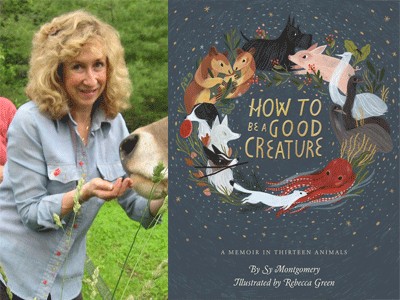
14
FebA Fierce Kind of Love
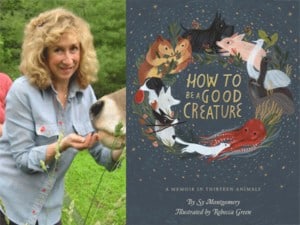 I was running errands at some point around the holidays when I happened to tune in to a radio segment about tarantulas. This is not a subject I’ve ever had any interest in, and I would normally have changed the station at once, but the topic wasn’t immediately clear to me. A woman was describing a furry creature with delicate, pink-tipped feet. I tried to guess the animal, factoring in her obvious admiration. I was hindered by the detail of her holding it in her palm. When one of the hosts of the show expressed his disbelief that a tarantula could be charming, I actually recoiled. My hand, which had been hovering near the radio buttons, yanked back as if a huge spider might suddenly appear there. Who was this lunatic? In short order, I learned that the woman speaking was naturalist and author Sy Montgomery, who has been described by The Boston Globe as, “Part Indiana Jones and part Emily Dickinson.”
I was running errands at some point around the holidays when I happened to tune in to a radio segment about tarantulas. This is not a subject I’ve ever had any interest in, and I would normally have changed the station at once, but the topic wasn’t immediately clear to me. A woman was describing a furry creature with delicate, pink-tipped feet. I tried to guess the animal, factoring in her obvious admiration. I was hindered by the detail of her holding it in her palm. When one of the hosts of the show expressed his disbelief that a tarantula could be charming, I actually recoiled. My hand, which had been hovering near the radio buttons, yanked back as if a huge spider might suddenly appear there. Who was this lunatic? In short order, I learned that the woman speaking was naturalist and author Sy Montgomery, who has been described by The Boston Globe as, “Part Indiana Jones and part Emily Dickinson.”
Don’t get me wrong – I’m no slouch when it comes to loving animals. During my childhood summers, I would prowl the adjacent properties of my grandmother and aunt in rural New Hampshire, which hosted a menagerie of ponies, goats, cats and various breeds of dogs. Wildlife wandered through the profusion of flowers and the acres of trees that graced that happy place. The aunt encouraged my fascination with horses by gifting me books like Marguerite Henry’s Born to Trot and My Friend Flicka by Mary O’Hara, which I followed with others, from Anna Sewell’s Black Beauty to James Herriot’s All Creatures Great and Small. My grandmother provided art supplies with which I would depict the pony I planned to have one day. An array of pets over the years included a turtle, fish, hermit crab and dog, but I never did get that pony.
I learned that the aforementioned spider was one of the baker’s dozen of characters featured in Sy Montgomery’s latest book: How to be a Good Creature: a Memoir in Thirteen Animals. The collection includes a sampling of Montgomery’s signature adventures with the strange inhabitants of exotic locales, including her first such journey. She recounts that experience in Australia tracking a trio of emus, where she slips into a level of engagement reminiscent of Jane Goodall with her chimps; she shuns the role of observer in favor of participant in order to more fully know her subjects, noting their different personalities and behaviors. However she doesn’t write solely about exotic creatures. She also shares stories about the animals she has rescued, from a runt piglet to several dogs. She begins with her childhood Scottish Terrier, Molly, and ends with a half blind Border Collie named Thurber. Montgomery writes with unapologetic passion and isn’t afraid to show the fierce kind of love she has for animals. She credits all of the animals in her life with being her teachers, which is an outlook that I share.
As an adult, I’ve had the privilege of caring for three retired racing greyhounds. The first one my husband and I adopted was a sleek brindle we named Abby. She was beautiful, smart, and a social butterfly around people, but she could’ve taken or left other dogs. Her “roo” (the howling noise favored by this generally quiet breed) was deep and beautiful, and could perhaps have been dubbed into a movie as the distant cry of a wolf. Having the good fortune to be entrusted with this special dog made both of us feel like we’d won some sort of cosmic lottery. Three months after she came to us, I received unrelated, terrible news: my mother was diagnosed with ovarian cancer. Over the next two-and-a-half years while she fought for her life, Abby was by my side as I navigated moments of pain, despair, and (false) hope. When my mother died, it was Abby who consoled me. Perched on the couch next to me with her chin slung over my leg, she did something no person could do: bear witness to a torrent of tears without feeling the need to smother it with words. The gratitude I felt for this gift was immeasurable. It was also short-lived. Five months later, Abby was also diagnosed with untreatable cancer. This time there was no silent witness to my pain. It was the moment when I realized how much I had relied on my friend. I was bereft. Then slowly, with time, I was able to find a new narrative in these events. Abby arrived before the darkest time in my life, and she stayed by my side throughout it. All I have to do is imagine that time without her presence to feel lucky all over again.
I had expected to read the memoir of an animal lover. What I actually found when I read this book was much more than the title promised. While it does recount events from Sy Montgomery’s life through a series of vignettes about different animals she has known, her own story is interwoven with those of the animals so deftly that in movie parlance she would be just one of an ensemble cast. She lives her message. I couldn’t stop reading this book, which is a testament to Montgomery’s way with words (who knew reading about octopi could be so compelling?) She also has a way of writing about connecting with wild creatures that makes it seem not that odd an event.
Sy Montgomery is the author of dozens of books for both children and adults. Those who are hungry for more can check out The Good Good Pig: The Extraordinary Life of Christopher Hogwood or The Soul of an Octopus: A Surprising Exploration into the Wonder of Consciousness. If you’re looking to branch out, Montgomery’s recommendations include: My Life with the Chimpanzees by Jane Goodall, Gorillas in the Mist by Diane Fossey and Farley Mowat’s Never Cry Wolf.
Kirstie David is the Literacy/Outreach Librarian at the Morrill Memorial Library in Norwood, MA. Look for her article in the February 14, 2019 issue of the Norwood Transcript.
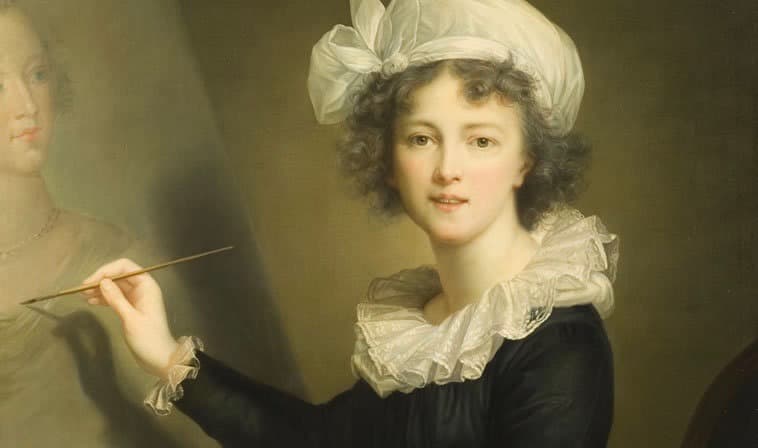
7
FebWhere Are All the Ladies At?
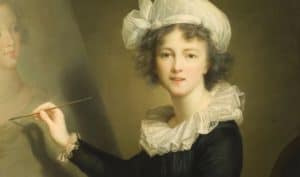 One day, while I was at home working on a painting, I decided to try to learn through osmosis and put a documentary on. I usually listen to music or have the TV on while I paint or draw, and I don’t really pay close attention since I am focused on my work. But instead of absent-mindedly trying to figure out who the real murderer was on some British mystery, I thought, maybe I could learn something! I always mean to watch more documentaries or read more about the topics I am interested in, but there just aren’t enough hours in the day. So I picked a topic, female artists, and selected a documentary on someone I’d never heard of.
One day, while I was at home working on a painting, I decided to try to learn through osmosis and put a documentary on. I usually listen to music or have the TV on while I paint or draw, and I don’t really pay close attention since I am focused on my work. But instead of absent-mindedly trying to figure out who the real murderer was on some British mystery, I thought, maybe I could learn something! I always mean to watch more documentaries or read more about the topics I am interested in, but there just aren’t enough hours in the day. So I picked a topic, female artists, and selected a documentary on someone I’d never heard of.
The documentary was “Le Fabuleux Destin de Elisabeth Vigée Le Brun” (Élisabeth Vigée Le Brun: The Queen’s Painter). Truthfully, 18th Century court painting is really not an interest of mine. I’m more of a contemporary art kind of gal. But I do try to broaden my horizons and thought I could sit through an hour and a half of the documentary to learn about something I might not otherwise learn.
After a few minutes, I started to get really into my work and wasn’t paying much attention until I heard something about a school. A school for female artists in 18th century France.
Huh? Surely that was wrong; women were not permitted to study at an art school at that time, right? In my art history classes, we heard how there were very few famous female artists in our textbooks due to a combination of backward societal ideas (women were not thought to be intelligent enough), laws (women were not permitted to study at universities or as apprentices), and familial obligations (who else would have those babies and keep the house?) Sure, there are exceptions to every rule, and those exceptions were usually wealthy and had a father or family member who was an artist to learn from. But that lead to what I thought was maybe a handful of female artists every hundred years or so, right?
What was this documentary talking about?
I went back to this part to hear exactly what the historian had said. Yes, this woman was a famous, professional portrait artist, the personal artist to Marie Antoinette, and among other things, had started a school of art for young women.
Amazing! Why had I not heard of her? Shouldn’t she be in every art history book as the first woman to start an art school for women?
I immediately stopped what I was doing and Googled this. Who was this lady? What school? Why did I not know about it?
I discovered something amazing and infuriating: she was not alone. There have been many female artists throughout history who started schools, usually within their own homes, to teach art to their sisters, family members, or other female members of their community. Women may not have been permitted to attend schools with men, but that didn’t stop them from starting their own.
So then, if there were many female artists, why do we not hear more about them?
Women were not allowed to be in art schools, and they were not allowed to join professional organizations. Take, for instance, the French Royal Academy of Painting and Sculpture that decreed in 1770 they would allow no more than 4 women members at any time. This was for the lifetime of an artist! Institutions like these controlled what got put into galleries and what people were able to view. If the art was not available for view, it was not talked about, written about, and was essentially lost to history. Another well-documented problem was that art dealers and collectors routinely changed the name of an artist from the unknown female artist, to either a male family member or a male artist, to maximize prestige and perceived value. Women that did prosper also had the problem of changed names due to marriage, making it difficult to properly assign multiple works to the same person, showing an evolution of an artist’s life’s work.
This lead me to the question, who was the first female artist? I knew that was an impossible question but I wanted to run with it. Google led me to an article from 2013 in National Geographic called “Were the First Artists Mostly Women?” This article cited a study that claimed that of the artist hand stencils analyzed from various cave walls across the globe (thought to be the “signatures” of the wall painters), 75% were women! Another article stated that the women of Mithila, India have been famous for painting domestic scenes on the walls of their homes to mark important life events since the 14th century.
In the book, Women Artists by Nancy Heller, she talks about how the historians of ancient Greece spoke of female artists, and how in some work that has survived antiquity, artists depict women working alongside men in artistic pursuits. There are records of women in ancient Egypt, women working during the Renaissance, and across almost every time period there are records for.
So if they there are records, why are they not in our canonical texts? Thanks to better education for women and more demands for inclusion in all areas of society, we are finally rediscovering the art and stories of so many women long forgotten.
For more on this topic:
Women Artists: The Linda Nochlin Reader
Broad Strokes, by Bridget Quinn
50 Women Artists You Should Know, by Christiane Weidemann
The Guerrilla Girls’ Bedside Companion to the History of Western Art
Nicole Guerra-Coon is the Assistant Children’s Librarian at the Morrill Memorial Library in Norwood, MA. Look for her article in the February 7, 2019 issue of the Norwood Transcript.
